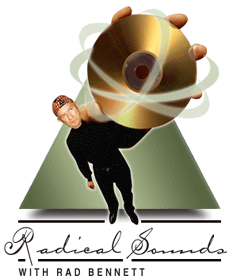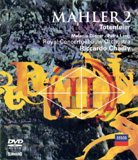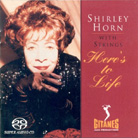 |
| February 1, 2005 Catching Up with 2004 -- Part Two  Last month, I began catching
up with some glorious recordings that had been missed last year. This month’s column
continues that roundup. Last month, I began catching
up with some glorious recordings that had been missed last year. This month’s column
continues that roundup.
Late last fall, a package arrived that contained SACDs from several different labels distributed by Qualiton. Hungaroton’s definitive production of Bartók’s Concerto for Orchestra is covered this month in the music section of GoodSound! Also in that box were two outstanding hybrid multichannel SACDs from BIS, both devoted to the music of Grieg [BIS 1191 and 1291], and both outstanding. This should come as no surprise to those who remember BIS as one of the pioneers in producing DDD recordings in the early days of the CD format. Ole Kristian Ruud conducts the Bergen Philharmonic in performances that are genial and spirited, with soloist Noriko Ogawa making a significant impression in the Piano Concerto. Other works include the Norwegian Dances, Symphonic Dances, Lyric Suite, and the Symphony in C Minor. The recordings get the balances just right. The Allman Brothers Band is heard in a near-perfect multichannel transfer of their classic live album, At Fillmore East [Mercury B0000400-36]. The sound of the band itself is mesmerizing. The vocals are nicely centered, the guitars spread to either side, with the drums behind and a solid, focused bass that forms a solid foundation yet is never too much. The band has singular presence on these discs, but what’s even more amazing is the feeling of place. This is the most accurate reproduction of a small theater that I have heard on a multichannel recording. It’s especially amazing because the recording was originally produced for two channels. Where are the DVD-Audio discs? So you’ve noticed -- almost everything I’ve covered lately seems to be on SACD. DVD-Audio producers have been waiting for, yes, the DualDisc, one side of which is DVD, the other CD. One of the biggest complaints I’ve had about DVD-As is that I can’t load them in my car’s CD changer. The discs literally won’t travel with me, whereas hybrid SACDs work just fine at home and on the road. The DualDisc will allow DVD-Audio to be comparable to a hybrid SACD. I can play the DVD-A side at home, the CD side in my car. Producers are aware of this. Silverline, one of the largest releasers of DualDiscs, is replacing a lot of its DVD-A catalog with comparable DualDisc titles. And if you go to the Universal site for new formats (consumers.umusic.com), you’ll note that all of their upcoming DVD-A releases are actually DualDiscs. For once in this crazy industry, something makes sense. I’ve tried quite a few DualDiscs and, despite some alarming reports to the contrary, I’ve found that they all worked as they’re supposed to, playing without a hitch in my three home players and my car. I hope to soon have some of those DualDiscs to cover here. In the meantime, here are two fine SACDs that deserve your attention, as well as one of the last standalone DVD-Audio releases.
With sounds ranging from a single flute to full orchestra, chorus, and organ, Mahler’s "Resurrection" symphony has always been a favorite audio demonstration piece. Small wonder, then, that we’ve been given several high-resolution versions of it. This one is the best. Chailly wrings every drop of emotion from this gigantic composition, and his soloists, chorus, and orchestra are all first-rate. The sound is robust and rich, with very good presence, if a slight absence of stage depth. The "Day of Judgment" music in the last movement calls for offstage brass; the engineers have placed this all around the listener, for an awesome effect akin to the "Tuba Mirum" in the Berlioz Requiem. Hearing the unaccompanied chorus singing ppp after the ff din is a testament to the dynamic capabilities of DVD-Audio. There’s plenty of organ in the finale, and it’s well balanced with the chorus and orchestra. Michael Tilson Thomas’s performance with the San Francisco Symphony, released on SACD at the same time, seems pale by comparison. Tilson Thomas leads a reading that is very well played but at times is downright dull, and the sound is shallow and lacks presence. The Chailly is the reading to have, and he throws in for good measure Mahler’s Totenfeier, an early version of the first movement.
Until recently, Giovanni Gabrieli was thought to have composed his great polyphonic works to be performed at St. Mark’s in Venice. But recent studies have indicated that in 1608 there was a monumental event at the Schola Grande di San Rocco on St. Roch’s Day, for which the famous Italian composer provided the music. Though the 17th-century equivalent of the musicians’ "pay stubs" have survived, from which can be estimated the enormous number of singers and players involved, as yet no record of the program has been found. Paul McCreesh has chosen works that might have been heard in 1608 and has recorded them at San Rocco, the location for which they might have been composed. The results are sensational. Gabrieli’s music is tailor-made for multichannel presentation: He composed for up to seven antiphonal choirs, all singing in the same work and dispersed throughout the listening space. On this recording, the various instrumentalists and singers surround the listener as they would in the original hall. How thrilling it is to hear the famous "In Ecclesiis" in this manner. The falsetto, tenor, and baritone soloists, accompanied by organ and two chiatroni, intone their verses from the front altar. Then the second (instrumental) and third (chorus, two violins, and two organs) send a resounding response of "Alleluia" from the rear and sides. My hair stood on end. McCreesh, who seems born to conduct this music, ups the ante by choosing for his finale the Magnificat a 33, and the results are overwhelming. Music like this simply cries out for multichannel treatment. How can so many so-called purist listeners still have their heads stuck in the sand about the multichannel presentation of classical music? Here is proof that those extra channels can be essential in realizing a composer’s original intent.
Singer-pianist Shirley Horn stepped out of her small club venue to team up with songwriter-orchestrator Johnny Mandel for this quintessentially lush, late-night listening set. If there is such a thing as life-affirming blues, Horn owns the style. Though she clearly calls up the past in such songs as "Where Do You Start?," there seems to be little regret, only strength in the idea that sorrow and pain are parts of life, and that life is a good thing to be living. With Horn, bassist Charles Ables, and drummer Steve Williams up front, Mandel’s arrangements use a large orchestra, including strings, harps, French horns, woodwinds, synthesizer, vibes, and percussion. There are no trumpets in the orchestra, but Wynton Marsalis provides important solo counterpoint on "A Time for Love" and "Quietly There." Horn’s honeyed, voluptuous voice is centered among the three front channels, the orchestra spread out behind. There is rich reverberation, but other than some percussion here and there, little actual instrumental placement in the rear channels. Despite the large number of musicians, the high resolution of SACD makes every detail clear; the sound has singular intimacy. ...Rad Bennett
Ultra Audio is part of the SoundStage! Network. |
 Mahler: Symphony No. 2 in C Minor,
"Resurrection"; Totenfeier
Mahler: Symphony No. 2 in C Minor,
"Resurrection"; Totenfeier Giovanni Gabrieli: Music for
San Rocco
Giovanni Gabrieli: Music for
San Rocco Shirley Horn: Here’s
to Life
Shirley Horn: Here’s
to Life